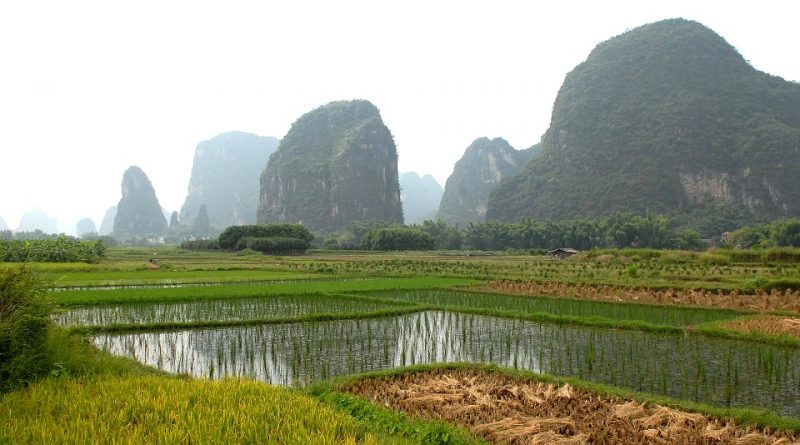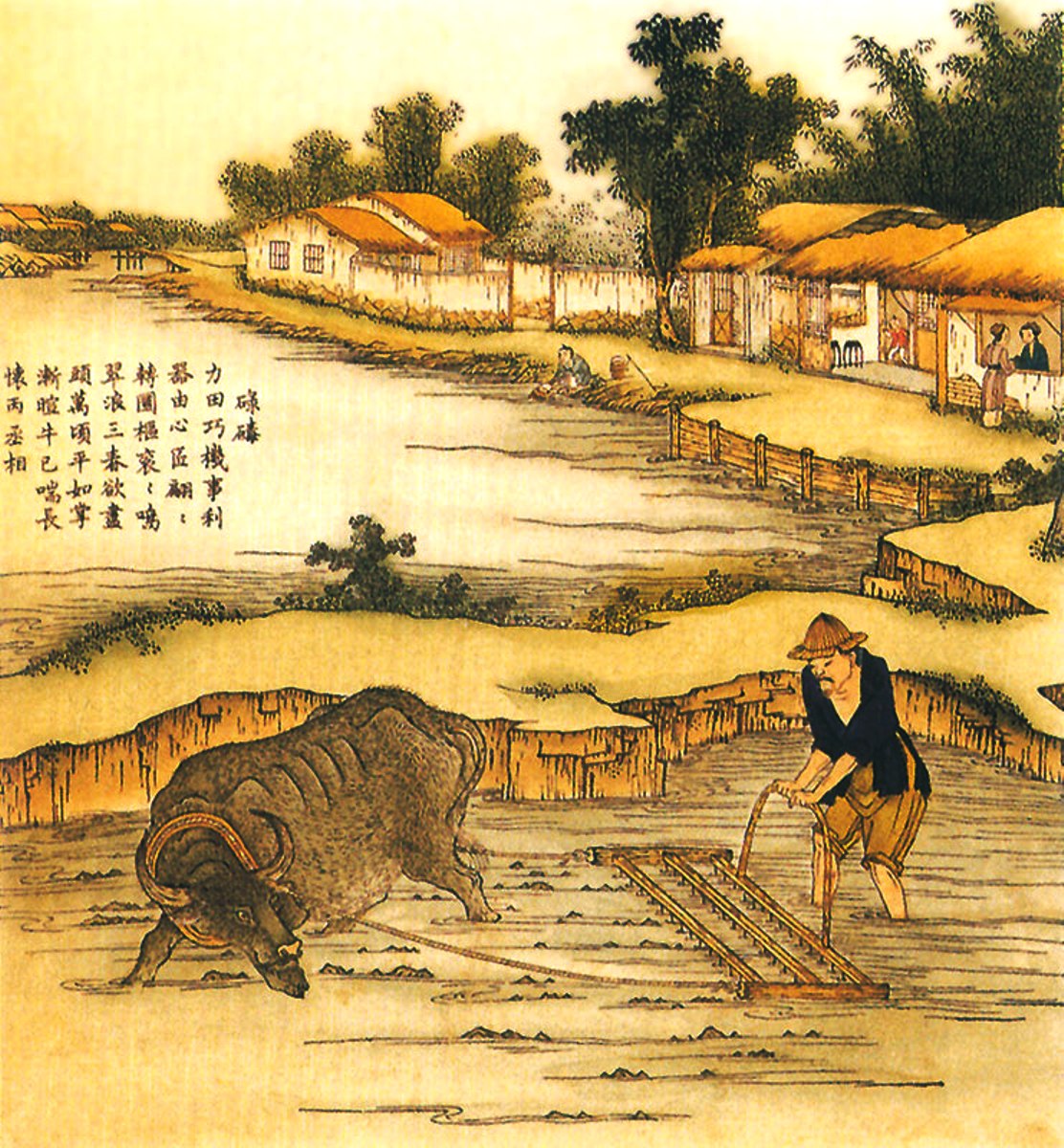Agriculture in ancient China – part VIII
Agriculture in ancient China – part VIII
It is important to know that in many regions of northern China continuous cultivation had become the norm since the time of the Han; crop rotation, carried out with the plantation of legumes like ‘small beans’ (xiaodou, ‘azuki beans’), or ‘big beans’ (dadou, ‘soya beans’), largely eliminated the need to let it rest fallow land. Jia, in his documents, describes a complete and complex crop rotation system, providing for each plant the best ‘base’ (of), that is the species that, cultivated previously, would have enriched the soil in the right way. It is interesting to note that the author also cares about providing the sowing rates for each species, including the adjustments due to the quality of the soil and the time of sowing; an interesting detail is the fact that Jia Sixie does not provide data on returns, which suggests that the concept of global fertility over yield was more important.
The basic principles and concepts of the soil processing systems, outlined in the Book of Prince Miglio, were, in fact, the fulcrum of every productive agricultural activity carried out in the arid regions of northern China; thus heavy soils and lowlands had to be turned over and drained to prevent them from absorbing too much water and rotting; while the light soils had to be well tilled, to keep the water of the scarce rains for as long as possible. This makes us understand how we had entered into very specific criteria of pedology and accurate understanding of the characteristics of the terrain. In this sense the ability to act at the right time and the use of good technique were all important elements, but above all it was necessary to keep the soil “mature” or “well prepared” (shu).
At that time the agricultural methods described in the Essential Techniques for the People required the massive use of animal-drawn tools, labor and manure. The equipment needed to work the land consisted of an iron plow with adjustable moldboard, pulled by a pull of two or three oxen or mules (for softer soils instead of the plow it was recommended to use a scraper, that traced a superficial furrow), various types of harrows, even with animal traction, including a model with iron spikes to break the clods, and a lighter model, called lao, which was a sort of trellis formed by branches of interwoven birch or elm, which was used to chop the soil or cover the seeds (which served almost as a harrow); an animal-drawn roller, used to compress snow or frost into the ground, and also to crush wheat sprouts so that each plant produces a greater number of stems; a seed drill with animal traction, for sowing with stripes and, finally, a wide range of hoes, picks and grubbers to weed, clean and finely crush the soil.
The operations described by Jia therefore had the purpose of managing humidity in order to keep the soil moist – but not wet – from the time of sowing until harvest and to crumble the surface, to obtain what modern agronomists call ‘mulch dusty ‘, to reduce evaporation.
So in the autumn period, after the rains, it was used to plow the soil in depth and then it was worked with a toothed harrow in order to break the clods before the winter frost, thus crumbling the soil and eliminating a part of the insects or other small ones organisms; at the end of winter the manure transported with carts was brought and mixed with the ground; from the first lunar month (which corresponds in our calendar to the end of January or the beginning of February) superficial plowing was carried out, which produced not very wide furrows, each of which was followed by many crossed harrows, obtained by dragging a harrow to first trellis along the furrows and then in a perpendicular direction to them. Plants such as hemp and coriander were sown by scattering the very small seeds in the superficial furrows and subsequently covering them with the half-timbered harrow, while most of the cultivated plants and all the cereals were sown in rows, driven deep along the ridges and well spaced from each other.
Thus the seeder served to save the seeds and not to disperse moisture or fertilizer. The method of sowing with stripes was recommended already in the Spring and Autumn of Mr. Lü, of which a translation is reported:
“The rows sown in rows reach maturity first, because no plant hinders the growth of neighboring ones. Carefully trace the horizontal lines, accurately realizes the vertical lines, because if the lines are straight, the wind will pass through them without doing damage “(Lüshi chunqiu, p. 67).
With this system it was obviously obtained a better working of the land:
“Don’t ask yourself how many times you need to hoe [panìco]; when you have finished the tour of the camp, start again and do not stop only because there are no more weeds, not even for a short time. (Zapping not only eliminates weeds, but keeps the soil mature, shu, and allows you to get swollen ears, with thin chaff, that do not crumble. If you have hoed your field ten times, you will have ‘eight-tenths’ grains ) [the weight of the ground will reach eight tenths of that of the grains in the ear] ”. (Qimin yaoshu jinshi, 3.10, p. 2)
The advent of the seeder was the most logical response to the problems of cultivation in a dry climate. From the documents found, the first known specimen dates back to the Sumerians and different types of seeders have been widely used for centuries throughout western and southern Asia, as well as in China.
The planter model used in China was at the same time simple, effective and versatile (for example, the hopper and sowing shoes could be, if necessary, removed from the frame and replaced by hoe blades); this was made almost entirely of bamboo, without metal components, with the exception of shoes for sowing, and equipped with a distribution mechanism made, in the most complicated models, with a string, a piece of cane and a pebble. In fact the Chinese seed drill had no weaknesses and for this reason it remained in use until the advent of mechanized agriculture.
In this regard, it is interesting to compare the Chinese experience with the first Western attempts to build a seeder, made in Venice and Bologna in the 16th century. It is probable that Italian engineers knew nothing of the models of seeder used from time immemorial in Asia; their purpose was to try to improve the seeding by hand of the individual grains. The European method of searching for solutions, based on an engineering and non-artisan approach, was profoundly different from the Asian one; from the beginning the European inventors turned towards the realization of wheeled machines equipped with a gear mechanism for the distribution of the seeds, but the technical problems posed by the project proved insurmountable for the engineers of the time and, despite the live Interest in the benefits of widespread cultivation among agronomists, the use of the seeder was established in the West only during the 19th century.
Guido Bissanti


